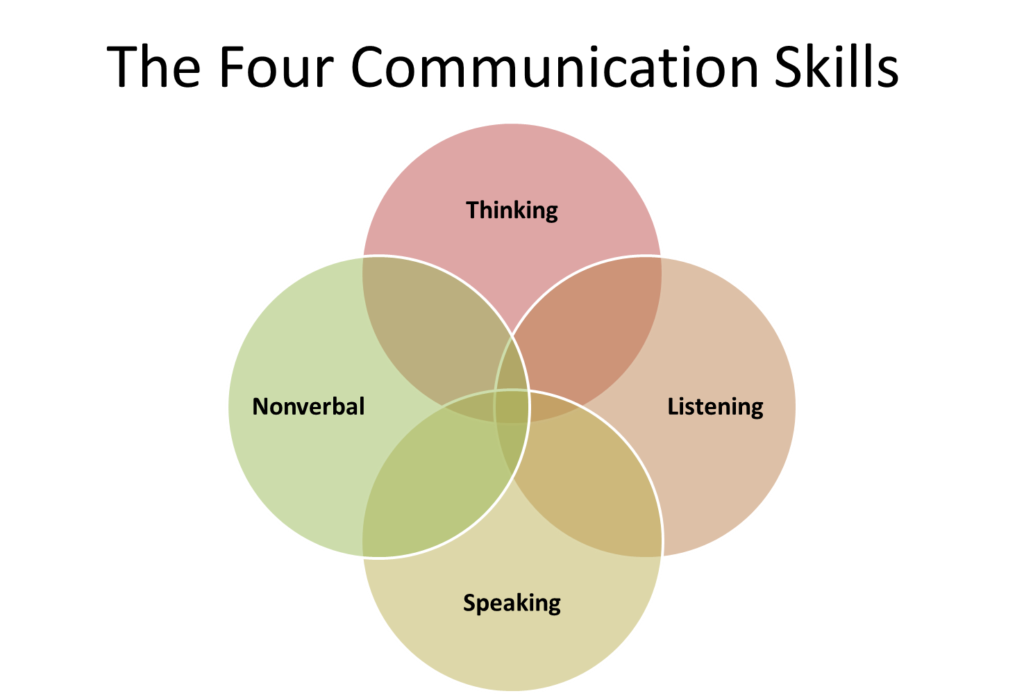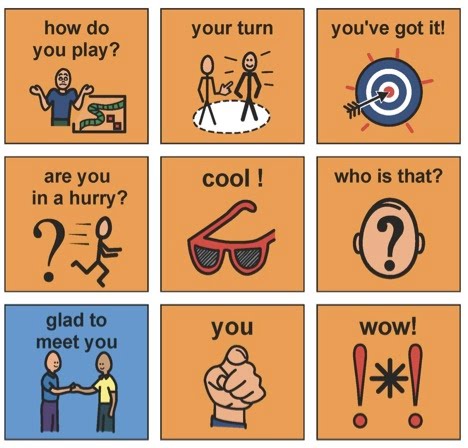A Quick Guide
The Centers for Disease Control and Prevention (CDC) estimates that 2.1% of adult Americans have autism spectrum disorder (ASD). And one in every 44 kids has an ASD diagnosis. Anyone who has this disorder may display little to major behavioral and communication issues. They typically struggle to express themselves and comprehend social interactions. And due to these difficulties, their world may shrink and become lonely. Here, you’ll discover how to interact with someone with Autism by using effective communication strategies. They will feel more at ease with those around them as a result.
How do those who have autism communicate?
The communication styles of people on the autism spectrum are as varied as the condition itself. The exchange of information, including ideas, wants, desires, and feelings, is referred to as communication. Writing and reading both fall under the category of communication.
Persistent difficulties with social engagement and communication are one of the main characteristics of autism. The speech and language development of many children on the autism spectrum varies. Speech and language development may be delayed, disorganized, or nonexistent for some people. The first sign that someone may have autism spectrum disorder is the absence of language comprehension and language expression using words and phrases. Understanding and utilizing nonverbal communication skills are also included in communication (eg. eye-contact, and body language, including personal space as well as gestures).
Types of communication
Language is the means through which humans communicate information, including the meanings and combinations of words.
- Receptive: Language comprehension
- Expressive: the use of language
Speech is a verbal kind of communication that creates words out of sounds. Nonverbal cues include gestures, expressions on the face, eye contact, etc. Language use in social contexts is referred to as pragmatics. It entails adhering to the “unspoken” conversational standards, such as turn-taking.

Difficulty in communication
Some individuals on the autistic spectrum might find it challenging to initiate or even carry on a conversation. They may also struggle to interpret facial expressions and deduce the communicative meaning from the context.
If you have good communication skills and are on the autistic spectrum, you typically take things literally and mean what you say. Perhaps someone has mentioned to you how honest you are all the time. It could also imply that you find it perplexing when people use language to mask their emotions or in a way that obscures their meaning.
Additionally, you might be excellent at speaking about your interests, eagerly giving a wealth of specific knowledge, and highlighting details that other neurotypical people would miss. Naturally, communication can be difficult for those with an autism spectrum disorder. These can have a small impact, like learning to read social cues, or have a big impact, making all types of communication difficult. Additionally, people with autism may struggle to filter out unimportant information and may become overwhelmed if there is an abundance of it.
Eye contact can cause “sensory overload,” which is why many people on the autism spectrum dislike making or maintaining eye contact with others. Additionally, even individuals who are skilled at speaking often fail to pick up on the subtleties of a conversation, which can leave them feeling alone and perplexed in a crowded world.
What communication effects does autism have?
Although all autistic individuals suffer “variances” in communication, the effects of these differences on everyday activities vary. Speech Pathology Australia reports that some autistic children meet their language and speech milestones in preschool, only to be diagnosed when they begin school and the demands of social interaction and communication rise.
These kids may speak with ease, but they struggle a lot with language’s social parts, such as how to start and carry on a conversation and decipher other people’s body language. For other kids, the “differences” in communication are evident from an early age, with kids struggling to learn to talk without extra help.
There are numerous therapies created specifically to improve social and communication abilities. Although having delays in speech and language development is a typical characteristic of autism, not all kids who have delays or problems with non-verbal communication are autistic.
What Are Autism Communication Strategies?
Strong evidence supports the advantages of early intervention, which should start as soon as feasible in the child’s life. Speech therapists and pathologists are the primary healthcare providers who can help with the examination and treatment of communication (and swallowing) abnormalities and delays.
Use Visual Support Technique
Many autistic kids respond favorably to visual information. Spoken communication is instantaneous and soon forgotten, whereas visual information can be stored and referred to over time.
Visuals can include communication books or boards that teach words and their meanings via the use of images and/or words on cards. When a child wants to communicate, they can point at the picture. For instance, a child who is thirsty can indicate by pointing to an image of a glass of water. The kid can use the symbols and words they are learning to construct sentences and provide answers to questions. The visuals can be used by others to interact with the child. The development of deliberate and useful communication can be facilitated by using this, which is referred to as the Picture Exchange Communication System.

A visual or pictorial schedule is another helpful communication aid for people with autism. These aid people in learning the actions involved in a routine, such as getting ready for bed. Each step is gradually learned through a sequence of graphics that show the steps in order. A person on the spectrum can also be shown what will happen next or when there is a change in the routine using visual schedules. Because persons on the autism spectrum often dislike change, this can help them prepare for and manage it more easily. This also makes it easier for people to understand the language of change and enables them to refer to schedules at any time during a task or day.
Augmentative and alternative communication AAC
People with ASD who are hard to understand or who are unable to speak can benefit from AAC. Gestures, sign language, images, objects, films, written words, computers, and mobile devices are frequently used. AAC can be used in any setting and at any time, not only in therapy.
AAC comes in two main varieties: unaided and aided. The former employs gestures and hand signs or mixes them with speech. In order to encourage speech, this type of sign language, sometimes referred to as hand signing, creates the sign for a word and combines it with the sound and visual of that word.
On the other hand, aided AAC employs low- or high-tech methods to help a person with autism to speak. Anything made of paper (cards, picture books, images, etc.), hand signs, or anything else that isn’t electronic are considered low-tech devices. High-tech assistance, on the other hand, includes a variety of electronic communications tools.
Through assistance with sound pattern identification, these visual support strategies aid in the development of speech. As they make the connection between the sound and the right visual, your loved one can also develop language abilities using these methods. Finally, by slowing down communication, AAC gives people with autism more time to process information and keeps them from becoming overloaded.
Watch: [Autism Spectrum Disorder: Intervention for Communication and Learning]
How to Support Effective Communication?
Being conscious of your communication style is crucial for effective communication between you and a person with ASD. Here are some suggestions to support communication with an autistic person:
Don’t Talk Too Much
To make sure the person understands you, speak less. By choosing words that directly convey your message, you can change the way you speak. The keywords should be emphasized and repeated as necessary. It is recommended to utilize single words together with supporting gestures while conversing with someone who has just begun using verbal communication. Additionally, it is more beneficial to give the person with ASD time to comprehend before repeating herself and to utilize basic, straightforward directions. Avoid using idioms or other ambiguous language, such as metaphors.
Talk slowly
Give the person time to process what you are saying by pausing between words and phrases and giving them time to respond.
Be Particular
Use precise terminology wherever possible. A person with autism can better understand what you are saying if you take the time to ask targeted questions, provide precise directions, or describe objects in detail. For further support, you can include visual components.
Use nonverbal communication
Along with your spoken language, use gestures, textual information, and pictures. For instance, the previously described visual schedules are excellent for assisting a person in adjusting to schedule changes. To support a person with autism, you can make the following gestures, for instance:
- Head shaking and nodding.
- Mimicking a task.
- Waving goodbye and saying hello.
Be aware of repetitive behavior
It’s advisable to refrain from urging someone who is engaging in repetitive activities like rocking, spinning, or flapping to stop. A person with ASD typically expresses their emotions through repetitive behavior. Therefore, if you see them rocking back and forth, it may be an indication that they are feeling either anxious or excited. You can use soothing techniques for autism to assist someone with ASD to manage stress, especially if they are unable to communicate their feelings. These methods often consist of physical activity, breathing exercises, scheduled activities, and more.
Give Structure
When there is structure, most autistic people function well and experience fewer “meltdowns.” You can also promote independence and communication with you by establishing routines and planning timed activities. You may time the activities with special equipment, letting them know what to expect next. Additionally, you may show how much time has passed during each task visually. These techniques provide kids with a sense of independence and reduce their anxiety about what they’re doing.
Avoid unexpected or routine adjustments without adequate notification or assistance. This interruption can reverse any progress. Instead, you can use reinforcers like giving them access to a favorite pastime to motivate them to complete a specific task. When engaging in scheduled activities, it’s best to adapt your communication style to the situation or audience. For example, you would speak to a child in a different way than you would an adult.
Additionally, break a task down into steps before asking them to complete it. Your instructions will be easier for the person to understand if you give them in chronological order. They will also acquire the language abilities necessary to explain what they are doing.
How ABA Therapy Can Aid in Autism Communication Strategies?
The identification and targeting of skill development goals are what make ABA therapy effective. Skills that are lacking in a variety of domains will likely be addressed via ABA therapy. These domains will change and depend on the demands of each learner specifically. ABA-based treatment plans have been shown to be efficient given a particular challenge. Evidence-based practices refer to this. Although a therapy program’s specifics will differ from person to person, its fundamentals always remain the same. a base built on solid, empirically validated techniques that have been regularly used throughout time in applicable settings.
We hope you found this article helpful in learning about some effective communication strategies for people on the autism spectrum. Learn more about how Stimming Looks Like Across The Autism Spectrum: How To Manage It?



 Healing Your Inner Child: A Short Guide
Healing Your Inner Child: A Short Guide  What You Need to Know About Trauma & its effects
What You Need to Know About Trauma & its effects  Dealing with a Narcissistic Parent: Strategies and Support
Dealing with a Narcissistic Parent: Strategies and Support  Understanding the MBTI Personality Types
Understanding the MBTI Personality Types  Understanding the Big Five Personality Traits
Understanding the Big Five Personality Traits  Body Image: what it entails and how it affects you
Body Image: what it entails and how it affects you